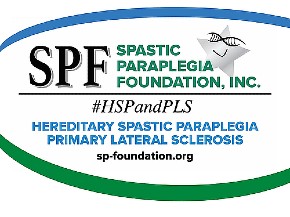It was not your typical CRISPR experiment. The scientists had just injected a mouse’s tail with magnetic nanoparticles bound to an exotic virus containing today’s genome editor of choice. They then plopped the mouse belly-side down atop a block magnet about the size of a deck of cards, positioning it just so. Even with all their attention to detail, however, “we were never sure it would work,” admits bioengineer Gang Bao of Rice University. “We figured, let’s just see what happens.”
What happened was that the magnetic field quickly steered the CRISPR-containing magnetic nanoparticles to the surface of the mouse’s liver cells and kept the particles well away from the heart, lungs, brain, and other organs. The liver is a big target, which makes hitting it the biological version of hitting the proverbial barn door, but the ability to direct CRISPR to a target organ and only a target organ was a big step toward solving one of the toughest challenges for genome editing: precise delivery.
CRISPR is easy enough to design and produce that thousands of scientists are using it to identify the function of specific genes, create animal models of genetic disorders, and pursue CRISPR-based therapies for diseases as different as Duchenne muscular dystrophy and a form of congenital blindness. But the “easy” part stops at cells’ outer boundaries. Getting CRISPR to the right cells, bypassing all others, and slipping it through their membranes is the opposite of easy.
“It’s one of the major barriers in gene editing research, certainly for translational work, and a very active area of investigation,” said Patrick Hsu of the Salk Institute, who studies whether CRISPR can, among other things, repair mutations in neurons that cause brain disorders. “You can make gene editing tools until you’re blue in the face, but unless you get them to the right place, it doesn’t matter.”
That’s because if scientists can’t nail the delivery, CRISPR is as useless as the coolest 512GB phone purchased online during a FedEx and UPS strike. They therefore have to get inventive. From nanobots to rare viral strains and bespoke nanoparticles, they are developing delivery systems that, they hope, will one day help make CRISPR medicine a reality.
Which is how Bao’s mice wound up on magnets. A nanomedicine expert, he knew that the classic way of carrying CRISPR into animals (“in vivo”) is via living viruses, which excel at that. Two such bugs, lentiviruses (HIV is the best known) and ade- no-associated viruses (AAV), have been genetics workhorses for years: Lentiviruses carry genes into T cells to produce cancer-fighting CAR-Ts, and Spark Therapeutics uses AAV for its blindness-curing Luxturna gene therapy.
Each has drawbacks when it comes to therapeutic genome editing, however. For one thing, viruses are small; some CRISPR assemblies won’t fit inside them. For another, lentiviruses integrate into the genomes of the cells they enter, said Neville Sanjana of the New York Genome Center; at the wrong place, that could activate cancer-caus- ing genes or silence cancer-fighting ones. AAV delivers its cargo outside the nucleus, which is safer, but is tricky to target to a particular organ even though different AAV “serotypes” infect one organ more than others, said Chris Nelson of the University of Arkansas. No one knows how the Food and Drug Administration will view a CRISPR therapy that edits DNA in unintended organs.
Some viruses have another significant downside: Once they deposit genes for CRISPR’s components into a cell, those components last for years.
That includes a DNA-cutting enzyme (classically, Cas9). Since perpetual DNA-cut- ting scissors are unlikely to be useful, and might not be safe, “You probably don’t want that,” said bioengineer James Dahlman of the Georgia Institute of Technology.
Bao therefore reasoned that with hundreds of species of virus capable of infecting mammalian cells, some might be better than the existing workhorses. He settled on a little-known moth virus that happens to be great at penetrating mammalian cells, but only if it can outrun a component of blood called complement C3. Bao had a plan for that: A magnetic field might get the CRISPR-carrying virus to its target before the blood could destroy it.
The Rice scientists packaged the usual CRISPR components (a guide RNA and the DNA-cutting enzyme Cas9) into the viral particles. For their secret sauce, they mixed the viruses with nontoxic nanoparticles of iron oxide, which are magnetic, and injected the mixture into mice’s tail veins.
Positioning the anesthetized animals on block magnets drew the iron oxide nanopar- ticles toward the liver cells, getting five times the CRISPR efficiency than with virus alone. But while the viruses-cum-nanoparticles punched through liver cells, they avoided the heart, lung, kidney, and other vital organs, Bao and his colleagues reported last year. The scientists were also able to steer CRISPR to the spleen, though not quite as accurately, and are now working on ways to generate more precise magnetic fields than the crude ones a block magnet produces.
“This is a critical issue for genome editing,” Bao said. “If you use a virus, it tends to go everywhere. You need a second component, such as nanomagnets, to get CRISPR only where you want it.”
Viruses’ limited cargo space and other drawbacks have driven scientists to look outside of nature’s offerings and make CRISPR carriers from scratch.
Nanoparticles, made of lipids or even gold, have advantages that are making them the go-to delivery vehicles for a growing number of both academic and commercial labs. Intellia Therapeutics, for instance, is banking on lipid nanoparticles for the genome editing therapies it is developing.
Whether made of downmarket lipids or luxury-market gold, nanoparticles are extremely roomy and penetrate cells well. What they do less well is break through the lining of blood vessels, which Massachusetts Institute of Technology bioengineer Sangeeta Bhatia calls “the biggest barrier to [them] getting into the [target] tissue.” Her solution: nanorobots.
Bhatia and her colleagues created nickel-coated micropropellers the size of a single cell, they reported last week: These nanoparticles are drawn to a target by a magnet, and drag the particles along in their wake, at least in the artificial blood vessels where the scientists tested them. Although they didn’t load the nanoparticles with CRIS- PR, Bhatia said, they’re big enough to carry it.
Once a swarm of nanoparticles has punched their way out of blood vessels, they’d ideally penetrate only cells they’re supposed to — liver, say, and not spleen. Trou- ble is, although properties such as size and electric charge affect what kind of cells nanoparticles penetrate, scientists don’t know the exact list of properties that mean, “good at entering lung cells,” for instance.
Georgia Tech’s Dahlman is therefore developing a greased-lightning way to test hundreds of nanoparticles at a time for their ability to enter specific types of cells, he and his colleagues reported last year. He packages genes for a fluorescent molecule into hundreds of different kinds of nanoparticles and injects them all into mice. The red glow reveals where each kind went. The screening system is promising enough, Dahlman said, that he launched a company, GuideRx, to commercialize it.
For some hoped-for CRISPR therapies, the genome editor doesn’t need to be injected into patients’ bodies in vivo, as will be required for blindness, Duchenne muscular dystrophy, and many other diseases. Instead, for blood disorders such as sickle cell and beta thalassemia, stem cells removed from the body (“ex vivo”) could be edited and then reinfused.
That opens up two additional delivery modes. One is brute force microinjection, literally jabbing CRISPR’s guide RNA and Cas9 enzyme (or genes that make them) into cells. If AAV is the Honda Ridgeline of delivery vehicles (small cargo capaci- ty), microinjection is the Chevy Silverado: its capacity seems limitless. That keeps microinjection in the running for ex vivo uses requiring a repair gene, which can be huge. (Microinjection is also the go-to method for editing embryos, which requires getting CRISPR into only a single cell.)
The other brute-force method, electroporation, zaps cells with high-voltage currents. That opens nanometer-sized pores, allowing guide RNA and Cas9 or other enzyme to slip in. It, too, works in single-cell embryos and cells removed from the body, but zapping a living patient is definitely not in the cards.













